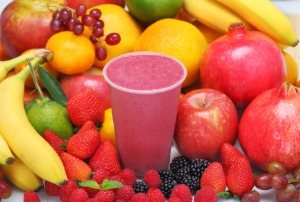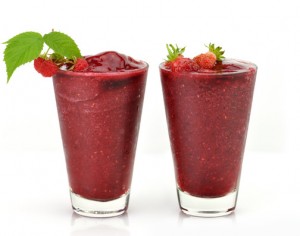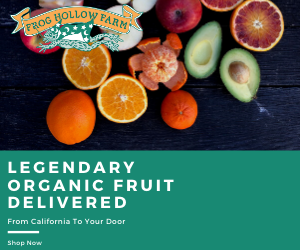 If you want to learn how to make delicious and highly nutritious smoothies, you’ve come to the right place.
If you want to learn how to make delicious and highly nutritious smoothies, you’ve come to the right place.
Whether you’ve never made a smoothie before and need step-by-step instructions, or you want to take your smoothie making skills to the next level, everything you need to know is outlined below.
I’ve made thousands of delicious, creamy smoothies over the years and have turned it into sort of an art form. The good news is anybody can learn how to make smoothies as I have. Once you get the basics down, you’ll be creating smoothies like a master in no time.
This guide will teach you everything you need to know to make the smoothie recipes on Healthy Smoothie HQ, recipes you find elsewhere, and better yet, new recipes you dream up on your own.
How to Make a Smoothie in 6 Steps
Learning how to make a smoothie is actually pretty easy if you follow the steps below.
Step 0: Get a Quality Blender
For this guide, we are assuming that you actually have a blender – perhaps that is presumptuous of us. If you don’t have confidence in your blender, chances are you should throw it out recycle it, and get yourself a new one! After all, we don’t want to be beating our ingredients with dull blades, we want to be finely chopping and mixing precisely! Here are a couple of blenders we highly recommend:
You can check out more of our blender reviews here.
Step 1: Pick a Smoothie Recipe to Make
Determine the smoothie recipe you would like to make based on your purpose. Are you on a diet, looking to lose weight and in need of a meal replacement? Or are you trying to get more greens into your diet, protein after a workout, or simply looking to make a delicious dessert recipe or a tasty snack?
If you don’t have a recipe in mind, peruse this site for plenty of healthy options, search the internet, or ask a friend for a good smoothie recipe.
Step 2: Add Your Liquid
The first thing to add into your blender is the liquid, which is usually around 1 to 2 cups. Follow what your smoothie recipe calls for, but keep a few things in mind. The more liquid you add the more watery or runnier your smoothie will be. Some people like it this way. If you prefer a thicker consistency, use slightly less liquid.
Here are the liquids I recommend for making healthy smoothies: water (filtered or real spring water), almond milk, coconut milk/water, raw milk, organic fruit juices, fresh-squeezed or pressed juice, tea, and kefir (from milk or coconut water).
Step 3: Add Your Base
The “base” is what will provide a creamy smoothie texture. Think of it as the “body” of your smoothie. Many smoothie recipes call for a banana or two. Bananas are a terrific base and provide your smoothie with a nice creaminess, and sweet taste. Fruits such as mango, peach, pear and apple will also do the trick. Other good options include avocado, coconut meat, chia seed gel, nut butters (almond is my favorite), yogurt, frozen fruit, and ice.
Water-rich fruits like watermelon and pineapple won’t give you that creamy smoothie consistency. Adding ice is a quick and easy way to thicken a smoothie full of water-laden fruits.
Step 4: Add Fruits and/or Vegetables
Now that you’ve got your liquid and base squared away, it’s time to add the fruits and/or vegetables to the smoothie recipe you’re making calls for.
This is also a great time to experiment, get creative, and have fun exploring the various fruit and vegetable combinations your taste buds adore. Most fruit can be used either fresh or frozen, see which you prefer. I tend to like my berries frozen (and often use them as a substitute for ice), but most other fruits fresh.
If you’re making a green smoothie with the likes of spinach, kale, beet greens, dandelion greens, arugula, or lettuce, you may want to cut the greens into smaller pieces depending on the power of your blender. You also may want to add the greens into your blender last, after adding any optional add-ons.
One option we love is the fresh organic fruit subscription from Frog Hollow Farm. Their mixed fruit sampler includes two to three different varieties of fruits that are in season, and they ship with 100% recyclable materials.
Step 5: Optional Add-ons
This is where you can really take your smoothie to the next level of nutrition and tastiness, and have lots of fun doing so. Many of the add-ons below can be incorporated into a number of smoothie recipes. As your smoothie skills develop, you’ll intuitively know which add-ons to use in which recipes. The list below is not meant to overwhelm you, but rather give you an idea of what’s possible, and available.
Sweeteners
Most smoothie recipes include enough sweet fruit to bypass a sweetener to enhance the taste, but if not, here are some good ones I recommend: honey, stevia, maple syrup, and dates. Avoid the popular sweetener agave nectar, here’s why. Xylitol is also questionable. For more info on sweeteners, check out my post on the best and worst sweeteners.
Salt
A dash of high-quality salt will increase the minerals and improve the taste of your smoothie. I prefer Celtic sea salt and Pink Himalayan salt. There are a plethora of good salts to choose from, just make sure to avoid nutritionally bankrupt white table salt.
Spices
You can also adjust the taste, and healthiness, of your smoothie by using common spices. Cinnamon, vanilla, ginger, nutmeg, and cayenne are a few of my favorites.
Protein Powder
If you’re making an after workout smoothie or simply looking to get more protein into your diet, add in a high-quality protein powder. I recommend Ascent, Sun Warrior, Warrior Whey, Dr. Mercola’s Miracle Whey, and a good hemp protein powder. The protein powders come in several delicious flavors further reducing your need to add a sweetener.
Superfoods
There is an abundance of superfoods available to boost the nutrition of your smoothie. Here are some of my favorites: cacao (raw chocolate), maca, flax seeds, goji berries, spirulina, coconut products (oil, shreds, flakes, meat), bee pollen, hemp seeds, acai (powder and juice), aloe vera, and colostrum.
There are also a number of highly nutritive green superfood powders designed for boosting the nutrition of your smoothies. My top picks are Ormus SuperGreens, Boku Superfood, and Vitamineral Green.
Step 6: Blend It Up!
Now that you’ve added all your lovely ingredients into your blender, it’s show time. Depending on your blender, and smoothie ingredients, you may need to start out on a low setting (or pulse) before getting up to top blending speed. Some blenders even come with a handy smoothie button for extra easy smoothie making.
I like to blend my smoothies until the liquid is fully circulating within the blender for about 5 seconds. Total blend time is usually between 30 to 60 seconds depending on the ingredients. It may take you a few blends to get it down. Don’t worry, once you do it will become second nature, like riding a bike.
 Now for the most important smoothie making step of all: Enjoy and Share!
Now for the most important smoothie making step of all: Enjoy and Share!
Smoothie Troubleshooting
Here are a few of the common smoothie making mishaps people often experience along with the remedy.
Is your smoothie too frothy? Try using a little less liquid, and make sure not to blend too long. Try withholding the liquid (maybe just half) until the other ingredients are thoroughly mixed or liquefied, then add the remaining liquid and only blend on the lowest speed until it’s incorporated.
The thickening or “base” ingredients mentioned above (banana, avocado, coconut meat, chia seed gel, nut butter, yogurt, frozen fruit and ice) will help. Milk can cause frothiness, maybe try organic apple juice or water instead. When blending greens like baby spinach, you won’t need as much liquid because they blend so well and contain a fair amount themselves.
Is your smoothie too runny? The quick fix for this is reducing the amount of liquid. More thickening smoothie ingredients will also alleviate this problem.
Is your smoothie not tasty or sweet enough? Simply add a little more of your preferred sweetener. I recommend honey, stevia, maple syrup, and dates.
Is your green smoothie too bitter? This happened to me the first time I used dandelion greens. Use less greens and/or more sweet fruit and sweetener.
Is your smoothie not blending very well? Filling your blender jar to high might result in less than ideal blending. If you have an older or low powered blender, you may need to blend your liquid, base, fresh fruit, and greens (chop into small pieces) first, then add in any frozen fruit or ice cubes and blend until nice and smooth.
You may also need to add more liquid to balance out the ingredients. Your blender may be the culprit. You may have an older, less powerful, blender that simply can’t get the job done.
Not sure which blender is best for you? See my post on The Best Blender For Making Smoothies Revealed.
Have a Tip or Story On Making Smoothies?
Is there a smoothie making tip or trick you employ that I failed to mention above?
Have a funny or embarrassing smoothie making story? I’ve got a one. One time I failed to put the lid on my blender bottle and sprayed a half blended smoothie all over my kitchen, even getting my ceiling nice and dirty. Oops! I certainly learned my lesson.
Please share your smoothie stories below in the comments. Happy Blending!
The post How to Make a Smoothie: The Only Guide You Need In 2021 first appeared on Healthy Smoothie HQ.
